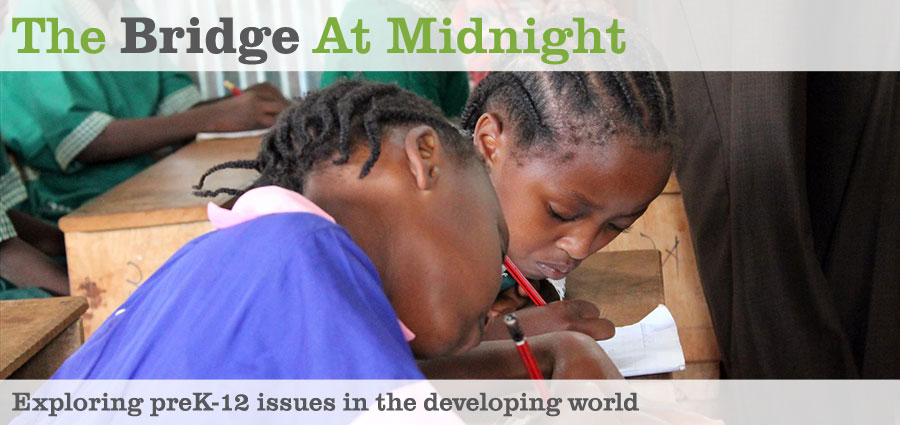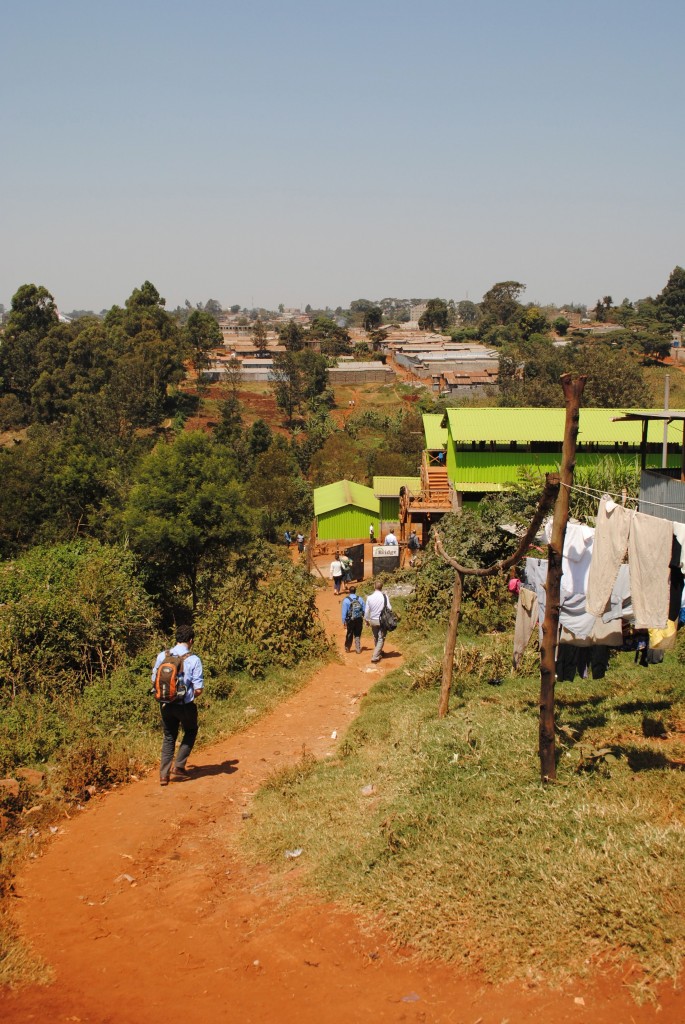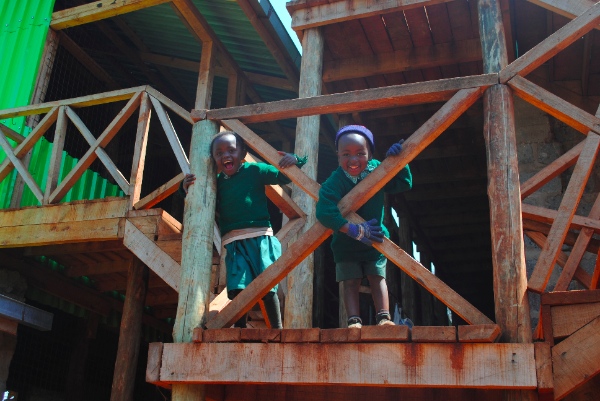Crossing The Creek
Posted: July 18th, 2013 | Author: Michael Goldstein | | 1 Comment »
We visited Bridge Academy in Gicagi. Willis, the Academy Manager, described his biggest challenge.
Further down that dirt path pictured below, there’s a creek. Many people live on the other side. You can see their homes. They want to send their children to Bridge. But the only thing which crosses the creek is a pipe. As an adult in nice weather, it’s not too bad, but you wouldn’t want to send your little kid crossing that thing each day. In rainy season, it’s even more hazardous. And the “walk-around” takes 90 minutes+.
A small physical “bridge” of some sort — perhaps even a sturdy plywood board raised up on cinder blocks — is the obvious solution here.
What is less obvious to Willis is exactly how to talk to the village elders on the other side, the landlord who owns the property on one side of the creek, and the landlord who owns the property on the “school side” and get them to agree on what to do.
Still, I wonder what’s tougher — solving for the village elders or dealing with zoning officials in Boston. Neither is a picnic.
We saw a terrific Grade 6 English teacher. Her name is Marion. If KIPP or Match saw her, they’d hire her on the spot. Anyone would.
She grew up in the area and still lives there. We asked what she thought kids need the most. “Reading,” she replied. “Reading, reading, reading. Nonfiction in particular.”
A challenge is kids and schools have few books. On my to do list is to try to figure out how to get each school a library. And by that I mean 300 age-appropriate books * 200 schools. “Library” may be an audacious term. Back at home in Boston, we may have 300 just for our 2 young kids.
(Which, by the way, end up left on the floor way too often. Me: Daphne, please pick up this stuff. Her: (Face) But I’m tired. Me: No, really. Her: Pouty Face. Me: C’mon. Her: (brightening) “Can I have a timeout?” Yes, our kid easily defeated her parents and the notion of timeout by liking it. But that’s another matter).
There are non-profit intermediaries that can help with this effort. I found this one online. Books For Africa. Interesting!
Books For Africa ships 40-foot and 20-foot sea containers of books. A 40-foot container holds approximately 22,000 primary and secondary books or 18,000 post-secondary books. A 20-foot container holds approximately 15,000 primary and secondary books or 12,000 post-secondary books. A box of primary and secondary books contains an average of 40 books, and a box of post-secondary books containers an average of 32 books.
The NGO consignee in Africa is required to:
-
Pay the shipping costs—approximately $10,300 USD for a 40-foot container and to most major seaports in Africa (inland rates are higher).
-
Provide all port documentation and pay all port and clearance costs, usually about $1,000 to $1,800 USD.
-
Distribute the books in the recipient country.
Hmm. We get 3 containers of books. That’s 66,000 books. We send about 300 to each of our soon-to-be-200 academies. That math works. Total price = $35,000 plus distribution. Let’s call it $50k total.
Of course, I’m used to non-profit: fundraise that amount from our donors. In Bridge’s case, I wonder how price sensitive parents would be to a one-month fee increase, on a one-time basis, from $5 to $6 tuition. That would cover the cost.
Hey kids. Stop hanging out on the balcony and get inside and read.




Books for Africa is legit! Peace Corps Rwanda got a shipment while I was there, sponsored by the embassy and USAID. I definitely recommend it.
Your photos are making me sooo nostalgic! I love that you are there!!